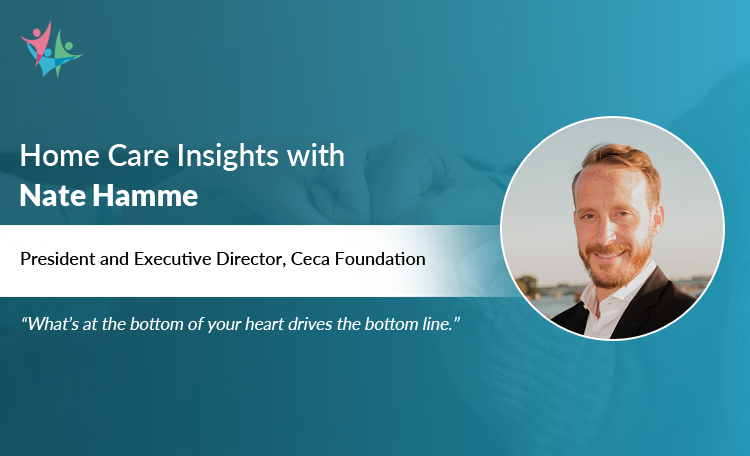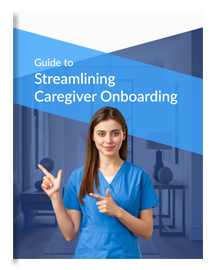In Conversation with Nate Hamme to Bring His Insights on Recognizing Exceptional Acts of Caregiving
Though caregiving is a demanding endeavor, it is also rewarding. Highlighting exceptional acts within this field goes beyond simply appreciating an individual. Public recognition validates their efforts, boosting morale and fostering a sense of accomplishment. This appreciation can lead to increased job satisfaction and a higher retention rate within the industry.
Besides, recognizing exceptional acts sets a benchmark for quality care and inspires other caregivers to strive for excellence that improves the overall standard of care the seniors receive.
At its core, caregiving is about human connection and empathy. Recognizing exceptional acts reminds us of the profound impact one person can have on another’s life. This awareness can attract more individuals to consider caregiving as a viable career while addressing potential staffing shortages.
To get a competitive edge, consider specializing in a particular area like post-surgical recovery or dementia care. Finally, focus on exceptional customer service.
To shed some light on the same, we interviewed a home care industry expert to bring his perspective on recognizing exceptional acts of caregiving.

Who Did We Interview?
For over a decade, Nate has been a core stakeholder in managing the Ceca Foundation, a not-for-profit that celebrates caregiving excellence and promotes quality patient care by providing healthcare communities with tools and best practices to recognize and engage their outstanding caregivers.
Let us now get to what he has to say about recognizing and rewarding exceptional acts of caregiving:
Question 1: Can you share some inspiring stories you have encountered that highlight the impact caregivers have?
There are so many! The housekeeper who dressed up in costume for his cleaning routes to bring joy to his residents. The ER nurse who realized the elderly gentleman she was treating was the subject of a silver alert and went to great lengths to reunite him with his family.
The CNA who lent jewelry to an elderly resident with family visiting so she could feel her best at brunch. The activities professional who created a handwashing game for memory care patients using shaving cream, eliciting much laughter and a teaching moment.
The porter who stopped what he was doing to hug and console a resident who accidentally flooded her apartment and dedicated his day to making it pristine again. The dining services assistant who helped clean up a resident who spilled his breakfast on himself and accompanied him to his room to change while using humor to lift his spirits.
Just a few examples of how people in all roles and responsibilities make patients and residents feel valued.
Question 2: You have experience in both for-profit and non-profit sectors. How do the challenges and opportunities for caregiver recognition differ between these models?
In many cases, not much—good leaders in both models are very dedicated to their work and care deeply about the populations they serve. Bigger contrasts tend to happen with larger companies having dozens of buildings, which may result in more hierarchical institutions and less decision-making allocated to individual communities.
Culture is difficult to apply as a one-size-fits-all. Sometimes, the integration of mission and values is more prominent in non-profits, and the desire for culture to be at the forefront becomes easier the more committed you are to those core characteristics.
In all cases, however, there remains an essential need to convey to team members that what’s at the bottom of your heart drives the bottom line—not the other way around.
Question 3: How does your approach to caregiver recognition adapt to different settings, like hospitals versus senior living communities?
You definitely have to be considerate of the care setting and meet providers, team members, and those they care for where they are. In home care, for example, there are fewer opportunities for interaction between team members due to their distributed model, being sent out on their own and into people’s homes—so maybe recognition from patients/clients will motivate them more than primarily from their peers.
In Senior Living and Skilled Nursing settings, caregiver relationships with residents can be developed over time and perhaps in a way that is rare in the acute-care hospital space. Effective techniques for encouraging recognition vary considerably as a result, as do things like QR codes and caregiver marketing and communication.
But there is one constant: authentic recognition focusing on individual agency and impact is the best thing out there. Creativity, teamwork, innovation, and compassion lead to better outcomes and experiences.
Question 4: Technology is constantly evolving. How do you see innovation playing a role in the future of caregiver recognition programs?
Anything that takes away significant time from patient and resident care or satisfaction must be deprioritized. But recognition falls into a unique space that transcends traditional categorization. Recognition is, at its best, both an employee and patient-resident experience strategy.
It is a way for the cared for to communicate what they like and appreciate; it’s a way for leadership and managers to build esteem and confidence; and it’s a way for team members to support one another and create a sense of belonging. But, without technology, effective recognition can be incredibly time-consuming and suffer from limited reach.
It’s why so many organizations have scrapped programs and gone back to the drawing board because they aren’t sufficiently “impactful”.
Technology makes recognition accessible to all stakeholders—staff, patients/residents, and their families. It makes measuring the amount of recognition and engagement for your effort a simple exercise and provides opportunities for refinement and improvement.
Ultimately, technology facilitates timely recognition for team members while making that recognition actionable and easy to share in various ways. Given the need for employers to appeal to a younger generation to address our current staffing crisis, it’s critical to embrace something more innovative.
Question 5: What advice would you give to listeners who want to personally show appreciation to the caregivers in their lives?
Almost any acknowledgment is going to be appreciated to one degree or another. There are exceptions—the gift of a gas card to someone without a car or coffee for someone who doesn’t drink it. Those gifts reflect a lack of knowledge about the person that outshines any potential gratitude one might wish to convey.
In all situations, authenticity is paramount. And it’s important to consider the ways you say “thank you”. A broad thank you that everyone gets or a party you throw for staff is appreciation, not recognition. Recognition is specific to what a person has done and makes clear what you are grateful for, and how their actions move and impact others.
In Conclusion
Applauding exceptional caregiving is not just a pat on the back. It fuels caregiver morale, sets a higher bar for care, and uplifts the human spirit. This recognition benefits caregivers and those they serve and care for, creating a wave of positivity that washes over the caregiving landscape and benefits us all.
